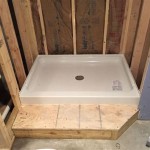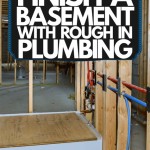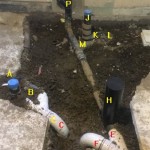Faced Vs Unfaced Insulation Basement Ceiling
When it comes to insulating your basement ceiling, you have two main options: faced or unfaced insulation. Both types of insulation have their pros and cons, so it's important to weigh your options before making a decision.
Faced Insulation
Faced insulation is insulation that has a layer of kraft paper or foil attached to one side. The facing helps to prevent air from leaking through the insulation, which can improve its thermal performance. Faced insulation is also easier to install than unfaced insulation, as the facing provides a barrier between the insulation and the framing.
There are two main types of faced insulation: kraft paper faced and foil faced. Kraft paper faced insulation is the most common type of faced insulation, and it is made from recycled paper. Foil faced insulation is more expensive than kraft paper faced insulation, but it is also more reflective, which can improve its thermal performance.
Unfaced Insulation
Unfaced insulation does not have a layer of kraft paper or foil attached to it. This makes it less expensive than faced insulation, but it also makes it more difficult to install. Unfaced insulation can be difficult to handle, and it can be difficult to keep it in place while you are installing it.
Unfaced insulation is not as effective at preventing air from leaking through as faced insulation. This can lead to heat loss in the winter and heat gain in the summer. However, unfaced insulation can be used in areas where there is no risk of air leakage, such as attics.
Which Type of Insulation Is Right For You?
The type of insulation that is right for you will depend on your specific needs and budget. If you are looking for the most effective insulation, then faced insulation is a good option. If you are on a budget, then unfaced insulation is a more affordable option.
Here is a table that summarizes the pros and cons of faced and unfaced insulation:
| Insulation Type | Pros | Cons | |---|---|---| | Faced Insulation | More effective at preventing air leakage | More expensive | | Unfaced Insulation | Less expensive | Less effective at preventing air leakage |Ultimately, the best way to decide which type of insulation is right for you is to talk to a professional insulation contractor. They can help you assess your needs and recommend the best type of insulation for your home.

Unfaced Vs Kraft Faced Insulation What S The Difference Johns Manville

Faced Vs Unfaced Insulation Bob Vila

Faced Vs Unfaced Insulation Bob Vila

Faced Vs Unfaced Insulation The Constructor

Unfaced Vs Kraft Faced Insulation What S The Difference Johns Manville

Faced Vs Unfaced Insulation Key Differences

Basement Ceiling Insulation Faced Or Unfaced Which One To Choose Insulationline Com

When To Use Faced Or Unfaced Insulation Youtube

Attic Insulation Faced Or Unfaced Valley

Insulate A Basement Ceiling With Building Moxie As The Diy Guy
See Also








